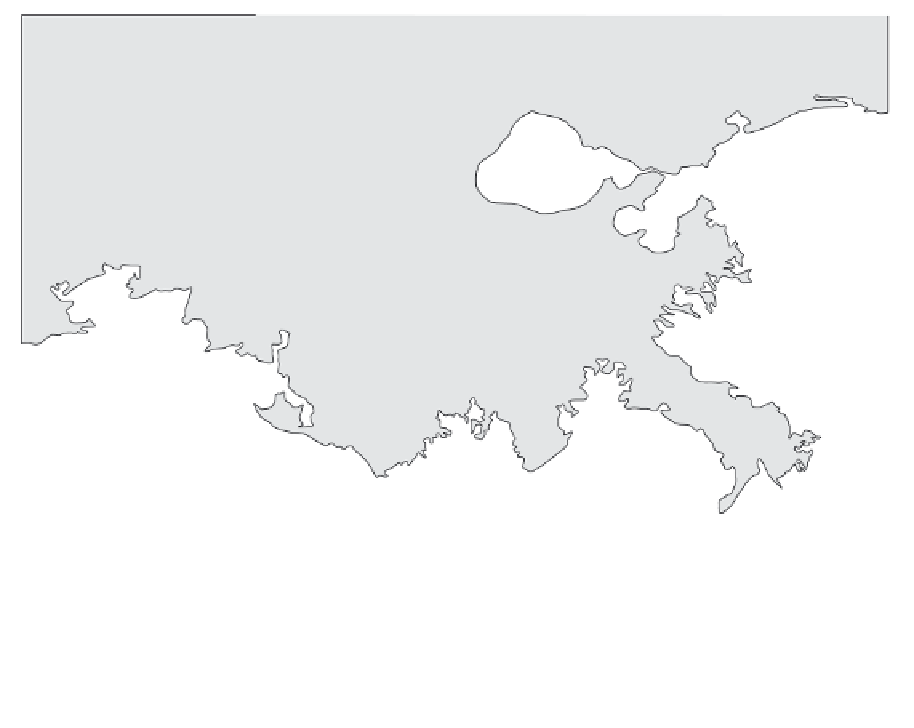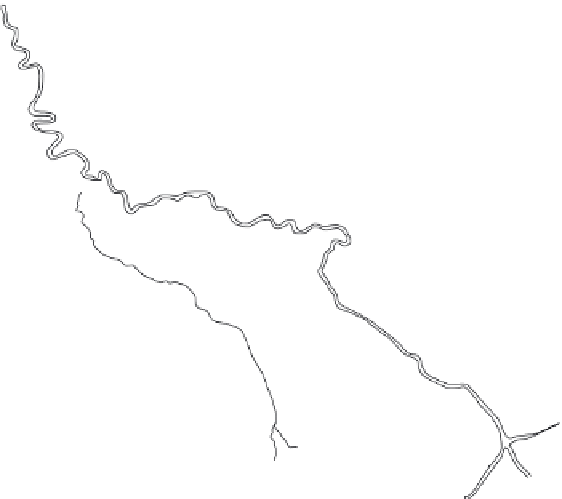Geoscience Reference
In-Depth Information
Prairie Terrace
Baton Rouge
N
New
Orleans
Delta lobes:
Gulf of Mexico
Sale Cypremort (7500-5000 yr BP)
Teche (5500-3800 yr BP)
St Bernard (4000-2000 yr BP)
Lafourche (3500-1500 yr BP)
0
Kilometres
20
Plaquemine (1000-800 yr BP)
Balize (modern)
Fig. 7.11
Representation of delta lobe formation in the Mississippi delta. (Compiled and modified from E.C.F. Bird (2000) and
Woodroffe (2003).)
7.3.3 Response of intertidal sediments to
sea-level fluctuations
channel switching can occur. At the mouth of the
Kent estuary in Morecambe Bay (UK), the main
flood-tide channel used to focus sediment accre-
tion towards the eastern side of the mouth, where
marshes developed rapidly and grew seawards at
the rate of several metres a year (Pringle 1995).
On the opposite side, little sediment was deposited
and marshes were absent. Around the early
1970s, this situation changed following the
blocking of old channels and the opening of new
ones, to produce a situation of preferential sedi-
ment delivery on the western side of the estuary
mouth. This led to the growth of salt marshes
here, and the cutting off of sediment delivery
to the eastern side, which is now experiencing
erosion in the order of several metres a year
(Pringle 1995) (see also Fig. 7.10).
Although loss of sediment input and changes in
currents can be caused by a variety of individual
factors over a range of time-scales, sea-level rise
has the potential to alter the entire function-
ing of estuaries and deltas because the whole
basis for vegetation establishment, tides and
wave energy will change. For example, the chan-
nel network in the Rhine-Meuse delta system
(Germany) has shown several fundamental
changes over the past 9000 years as a result of
changing sea-levels (Törnqvist 1993, 1994; Beets
& van der Spek 2000; Berendsen & Stouthamer
2000; Woodroffe 2003) and these have been
linked to a fundamental change in how the
































































